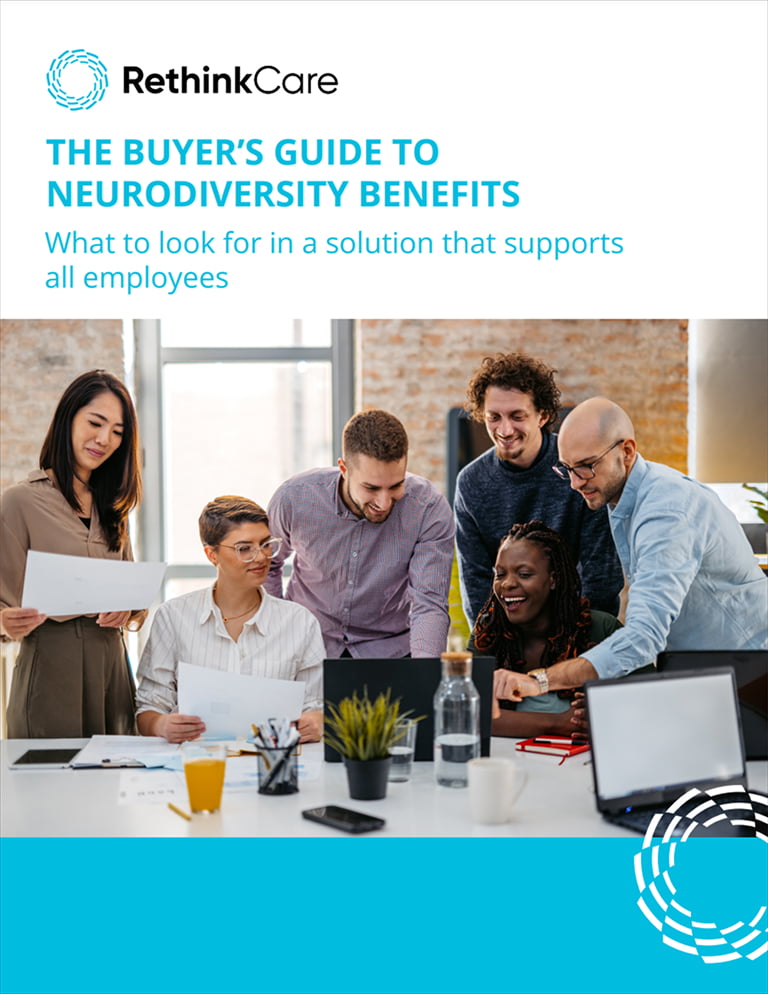Workplace diversity, equity, and inclusion (DE&I) efforts have traditionally focused on race, gender, and ethnicity. However, true diversity also includes neurodiversity, recognizing and supporting individuals with conditions like autism, ADHD, and dyslexia. Despite advancements, some organizations are facing pushback against DE&I initiatives, with concerns about “diversity fatigue” and fears of “reverse discrimination.” Overcoming these challenges requires a thoughtful strategy that promotes inclusive interactions and nurtures a culture where all employees, regardless of neurotype or identity, can contribute and thrive.
Here are six key practices that promote inclusive interactions for all team members, while also supporting the unique needs of neurodivergent individuals. These practices were inspired by and adapted from the book Performance through Diversity and Inclusion by Bernstein, Salipante, and Weisinger, which emphasizes the importance of creating meaningful, inclusive interactions to harness the benefits of diversity.
1) Establish a Shared Mission
- A clear, shared mission helps bring people together, regardless of their backgrounds, and creates a sense of unity. Continuously emphasizing this mission during new projects keeps everyone aligned and working toward the same purpose.
- For neurodivergent individuals, a shared mission can offer a way to connect with colleagues, especially when personal connections might be more difficult. Companies can support inclusion by hosting retreats or virtual meetings to define values and goals, allowing everyone to contribute to the company’s direction.
- Action Step: Organize a team meeting to revisit and discuss your company’s mission. Encourage everyone to share their thoughts on how they can contribute and highlight the value of each member’s unique expertise.
2) Facilitate Diverse Team Interactions
- Role rotations, cross-functional projects, and social events can help mix team members and reduce the formation of cliques.
- For neurodivergent individuals, these structured activities provide a helpful way to navigate social norms and feel more at ease. But for this to truly be effective, workplaces must embrace neurodiversity by recognizing cognitive differences as part of natural human variation and fostering an inclusive environment that ensures these differences are supported, not stigmatized. One of the most effective ways to provide this support is through peer mentorship, which helps new team members integrate smoothly into the workplace.
- Action Step: Organize a team-building activity, such as a social hour or team game, that mixes people from different backgrounds and roles.
3) Cultivate Interconnectedness
- When team members rely on and appreciate each other’s unique skills and talents, it strengthens team identity and leads to better decision-making and overall performance. Having clear roles and responsibilities ensures everyone feels valued and contributes toward a common goal.
- For neurodivergent individuals, this structure provides opportunities to highlight their strengths and connect meaningfully with the team. By creating projects where everyone’s roles are interconnected, teams can create a sense of unity, making each member feel included and part of a shared mission through collaboration.
- Action Step: Set up a meeting where team members can share their strengths and challenges and discuss how they can support each other on upcoming projects.

The Buyer’s Guide to Neurodiversity Benefits
Neurodiversity benefits can effectively address the challenges in the workplace and on the home front, yet not all solutions are created equal.
- Key considerations for a neurodiversity solution
- How to evaluate a potential partner
- Questions to ask a potential partner before going all-in
4) Promote Respectful Dialogue
- Some conflict is inevitable, especially in diverse teams. Personalized conflicts arise from individual differences, while substantive conflicts are based on differing opinions about tasks or projects, which can lead to better decisions if managed well. Providing safe spaces for resolution, understanding diverse communication styles, and having formal processes are essential.
- For neurodivergent individuals, it’s important to ensure their ideas are considered, even when they differ from the majority, and to offer clear ways to address communication misunderstandings. This benefits both neurodivergent and neurotypical team members.
- Action Step: Start implementing daily or weekly team check-ins or huddles to address any issues and clarify any miscommunications quickly.
5) Create Brave Spaces
- Team members can still sometimes feel uncomfortable or out of place, leading to self-segregation and making collaboration challenging. To help reduce this discomfort, it’s crucial to create a brave space where everyone feels free to share their thoughts. Leaders and managers can encourage open dialogue, model inclusive behaviors, and offer training on active listening and effective communication. This approach helps team members connect despite their differences and fosters a more cohesive and respectful workplace.
- For neurodivergent individuals, these practices are particularly beneficial in building confidence and promoting a sense of belonging within the team.
- Action Step: Hold a team meeting focused on open dialogue. Incorporate prompts that allow individuals to share personal stories, which can help break down barriers and build connections.
6) Ensure Equal Status for Everyone
- True inclusion means that all team members feel heard, no matter their role or background. Without this, people in lower-level positions may feel left out of important decisions, affecting their confidence and performance. Equal status doesn’t mean equal authority, but it does mean every opinion is respected.
- This is particularly important for neurodivergent individuals, who may have felt excluded before. When everyone’s input is valued, people are more likely to share their ideas, leading to stronger collaboration and better team results.
- Action Step: Set aside time during your next team meeting for everyone to share their thoughts on an important topic, ensuring that each person has equal time to speak.
For neurodivergent individuals, these practices are particularly beneficial in building confidence and promoting a sense of belonging within the team.
Louis Chesney Share this
These efforts demonstrate a commitment to a culture where inclusivity is practiced daily, ensuring every employee feels recognized, valued, and empowered to contribute to the collective success of the company. By implementing these key practices, organizations can navigate and mitigate pushback against DEI initiatives, creating an environment where diverse perspectives are celebrated and integrated into the fabric of the business itself.











